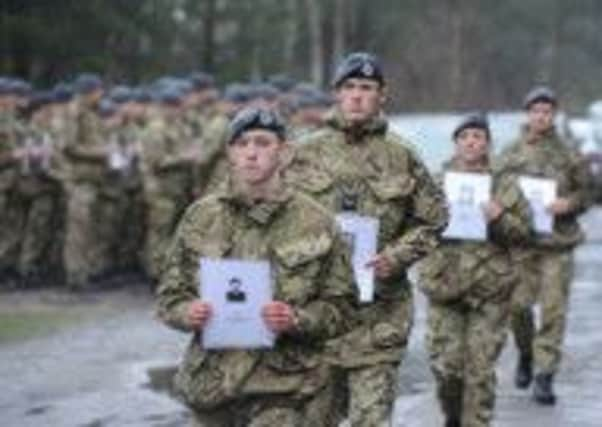Remembered: Great Escape heroes


A ceremony to commemorate the 70th anniversary of the events portrayed in The Great Escape took place yesterday on the former site of prisoner-of-war camp Stalag Luft III.
Survivors, families and officials from the British and Polish governments gathered at the site, in what is now Poland, to honour the daring escape plan that saw 76 Allied prisoners of war escape the camp in 1944. The Gestapo later shot 50 of the 73 men who were recaptured.
Advertisement
Hide AdAdvertisement
Hide AdThe ceremony was the first time the plot had been marked by a formal act of remembrance and was attended by survivors of the prisoner-of-war camp.
At the end of the service 50 RAF service personnel set off on a four-day march to the cemetery at Poznan, where they will lay a wreath at the graves of the 50 escapees who were executed on Adolf Hitler’s orders.
The RAF was represented yesterday by Air Vice-Marshall Stuart Atha, who said the escape was “an extraordinary chapter written by men with great courage and character”.
He went on to say that those who escaped were “an exceptional band of airmen whose bravery, ingenuity and resilient spirit set an example for all time”.
He added: “When first captured, they did not accept that for them the war was over. Far from it; they were not prisoners of war – they were prisoners at war. And through their activities, they opened another front that distracted and diluted enemy forces and demonstrated that no fence, no Stalag Luft, could contain Allied airmen.”
The escape was immortalised in the classic movie The Great Escape starring Steve McQueen, James Garner and Richard Attenborough, which was released in 1963.
The prisoner-of-war camp, 100 miles south-east of Berlin, now sits in Polish territory but during the Second World War it was still part of Germany. The prisoners were mainly members of the RAF and the US Air Force, along with servicemen from other Allied forces.
The escape committee was set up in spring 1943 and led by Squadron Leader Roger Bushell, who ordered the digging of three tunnels – codenamed Tom, Dick and Harry – which were sunk to a depth of 30 feet and propped up with wooden boards stolen from the prisoners’ beds. It took almost a year to dig the 300 feet under the fence and on the evening of 24 March, 1944, 200 prisoners were ready to make their escape. However, only 76 were able to make their way out before the tunnel was discovered by the guards.
Advertisement
Hide AdAdvertisement
Hide AdOnly three prisoners, the Norwegians Per Bergsland and Jens Müller, and Bram van der Stok, a Dutch pilot, were able to avoid recapture and 50 out of the 73 who were caught were shot dead by the Gestapo under orders from Hitler, who was enraged by the escape.
Simon Pearson, the author of The Great Escaper: The Life and Death of Roger Bushell, said: “The 50 were selected randomly by the SS.”
The last British survivor of the 76 escapees is Dick Churchill, 94, who was recaptured after hiding in a barn.
Mr Churchill said it was his name that saved him from being shot.
“I think it was my name, I’m pretty certain,” he said. “I’m not related to Churchill, to my knowledge, but they thought I might be.”